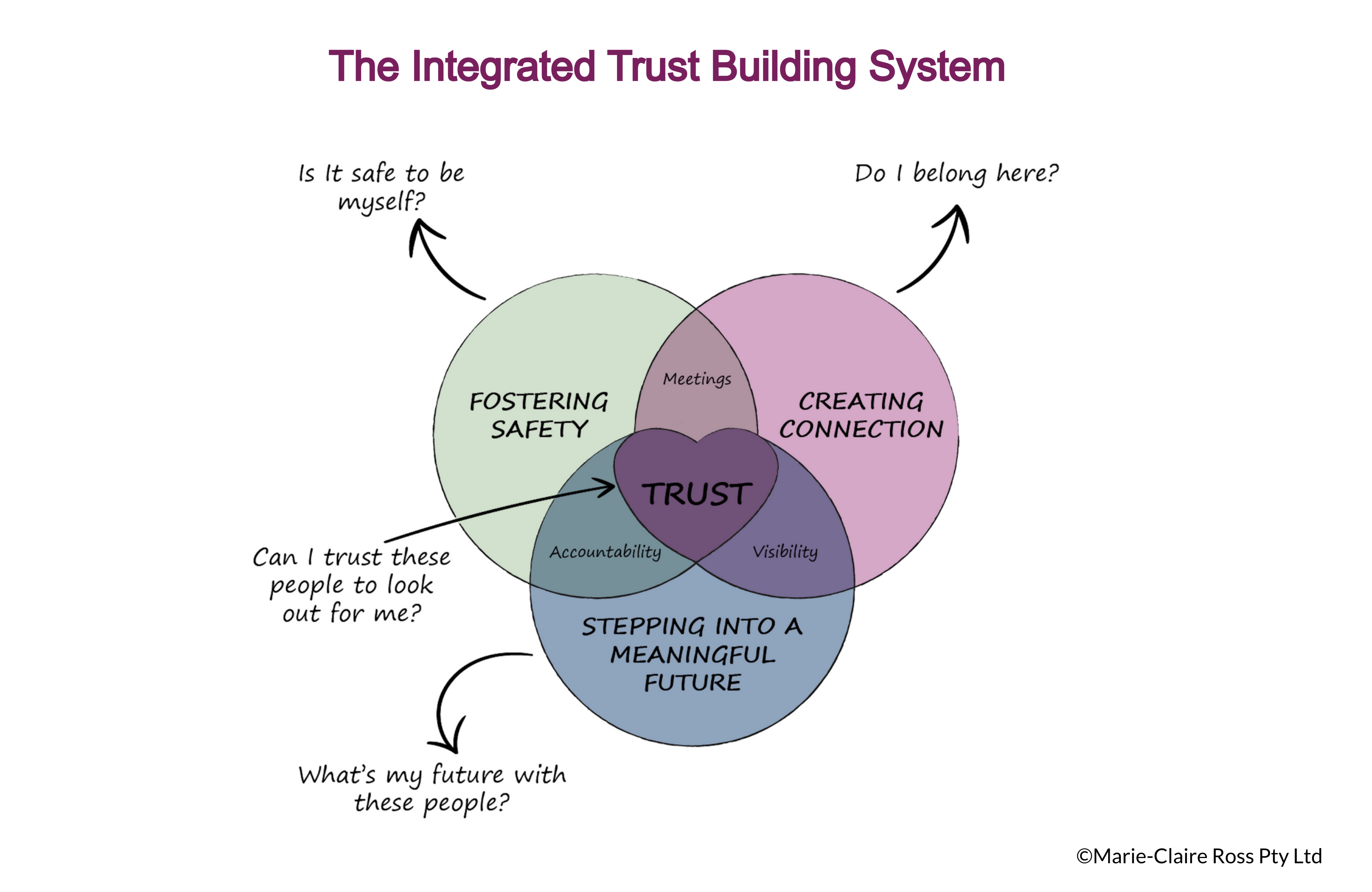
One-on-ones meetings might seem like a management fad, but the truth is they are one of the most effective ways to build trust with your direct reports.
One on ones serve as a powerful tool for fostering stronger, more trusting relationships with each of your team members.
They allow you to truly connect with your reports, making them feel valued, understood, and heard. This, in turn, enables you to provide the necessary guidance and support for your team members to achieve significant milestones.
You can think of effective one on ones as being akin to managing a strategic investment like a term deposit.
The initial one on one sets the groundwork, acting as your opening balance. By genuinely caring and showing interest in your team member's success and well-being, you lay a strong foundation to build upon. Subsequent one on one sessions serve as opportunities to accumulate interest, stemming from the attention and support you offer.
However, if you approach these meetings with your own agenda in mind, it can quickly erode trust with your team member, indicating a lack of genuine concern for their best interests. This approach not only hinders the growth of your relationship but may forfeit any interest accumulation to your connection term deposit. If you really mismanage one on ones, you can unwittingly go into debit.
Let's take a look at the common mistakes.
The free flow one on one comes from a good place. Here the leader lets their report know that it's their meeting, so they give them the floor to talk about what they want.
This often seems like the right approach, but the problem is that without some sort of goal or structure, free flow one one ones aren't very productive.
This can work okay for a little while, but it's not a long-term solution. Most employees, particularly young employees, aren't sure what to talk about in one on one. Even if they are told it's all about them, over time, they start to run out of things to talk about.
Sometimes the reverse is true and you find employees have a lot to talk about. The discussion often gets sidetracked making it difficult to circle back to help your report with their initial issue. Other times, the one on one becomes an emotional venting opportunity that doesn't really go anywhere. All it does is ensure that both parties feel awful afterwards. Don't get me wrong - allowing your report to vent can be helpful. But you don't want to fall into the trap of having one on ones that are just complaint sessions.
When you facilitate free flow one on ones after a while, you get to a stage where both you and report have nothing more to talk about. So it seems reasonable to ask your report whether they want to do a one on one this week. The answer is often "No, I'm fine" because it seems awkward and pointless.
Even if employees get the wonderful opportunity to talk about themselves endlessly, it wears thin for employees who want to be productive and get results.
Often, managers tell me that they hardly ever do one on ones because they have introverts who don't have anything to say.
This means they feel that cancelling or rescheduling a one on one is an acceptable thing to do not realising that it can send the unintentional message that your report isn't worth your time. As a manager said to me "It makes you feel that you’re not valued and your time isn’t as valuable as the manager’s."
It's a game changer for managers when they learn that if their report isn't speaking up in one on ones, it signifies that they need to improve their one on one process.
A common trap leaders fall into is that when the one on one conversation falls flat, it seems only reasonable to talk about their agenda.
So it becomes another work meeting, otherwise known as the “Now I’ve got you here” chat.
Employees often feel shortchanged because little effort is made to check in with them and their special time gets taken away. The one one one becomes all about solving company or day to day problems rather than looking at supporting individual performance and goals.
Likewise, high performers can often feel disappointed during one on ones where they are told “You're doing really great. Keep it up.” Such feedback doesn't give them the specificity to continue doing great things or be prepared for the future.
A one on one is not the time to improve performance. Unfortunately, some managers believe it's appropriate to focus on negatives. Providing lots of negative feedback can be extremely demotivating. One on ones need to include praise and positive feedback so that your report can see a glimmer of hope in how they are tracking.
Using a one on one to talk about performance indicates that a manager doesn't know how to leverage the one on one to build trust. To improve performance, you need to have lots of positive interactions first with your one on one so they can feel comfortable around you. The one on one is the ideal vehicle to do that because they set the stage to build rapport first. Then, you can introduce a separate performance conversation (with the goal to help them). This is a more palatable approach for team members, when it comes from an authentic place of helping them rather than making them wrong.
Best practices for one on ones are to focus on what your report needs to grow their potential. If they bring up performance, then you can guide them. But it's not the time to bash them around the head.
A lot of leaders misconstrue guiding their employees as meaning telling them their life story. Again, this comes from a well-meaning place that your experiences and stories hold a lot of wisdom for others to learn from. While story-telling is important, not all stories are told well. Instead, they can become long-winded, self-involved talk fests.
According to Steven Rogelberg, the author of Glad we Met, as a helpful rule of thumb, 50-90% of a one on one is the ideal amount of employee talk time.
A leader's role in the one on one is to actually ask questions, listen and guide. It's not about filling the space with your voice, no matter how uncomfortable the silence.
Really listening to your employees gets you out of your head and shows you are present and focused. Silence needs to be embraced - this gives your report the space where important information can be surfaced. It's where the real transformation occurs.
Some managers think that one on ones are to only discuss work. In their mind work and personal stuff are separate and never the two shall meet.
However, you cannot build a deep working relationship with someone if you only see employees for their output and not as a human being. When people feel they can express their emotional state, they feel safe.
People want to see that their manager cares about them. This is demonstrated when you start with an emotional check ins - enquiring about how they are going in both their personal and work lives. This is important information because it helps you understand your report better enabling you to provide the right guidance and motivation during tough times. It puts people at ease when they can be seen for their whole self, not just their career self.
I see so many organisations miss out on the wonderful benefits of one on ones - more engaged employees, better productivity and improved employee capabilities. The reality is that despite the prevalence of these mistakes, they can be easily rectified. All it takes is introducing a structure with insightful questions that your report can select from. These can be centred on a variety of topics such as job role, career development, connection and goal progress.
A structured one on one provides an important framework that make one on ones meaningful and worthwhile. Giving your report the structure to come in and ask the questions they want to ask (from a pre-prepared list) takes out the guesswork for both of you.
It helps you understand and better motivate each report as well reduce the power imbalance between you, so you can provide frequent (ideally immediate) feedback to employees. Thereby, ensuring a smoother transition to candid performance conversations.
A really good structure prepares your report to think more about what they need to learn but to also dream about what could be. Not only that, it ensures you make really good use of the time available to really help guide your reports at a deeper level. This ensures one on ones are enjoyable and highly valuable to both of you.
If you want to learn how to run a structured, trust-building one on one, you can join my Leadership Mastermind (which starts in April) or have a dedicated workshop at your company.

One-on-ones meetings might seem like a management fad, but the truth is they are one of the most effective ways to build trust with your direct reports.

According to Gallup, employees whose managers hold regular meetings with them are almost three times as likely to be engaged as employees whose managers do not hold...